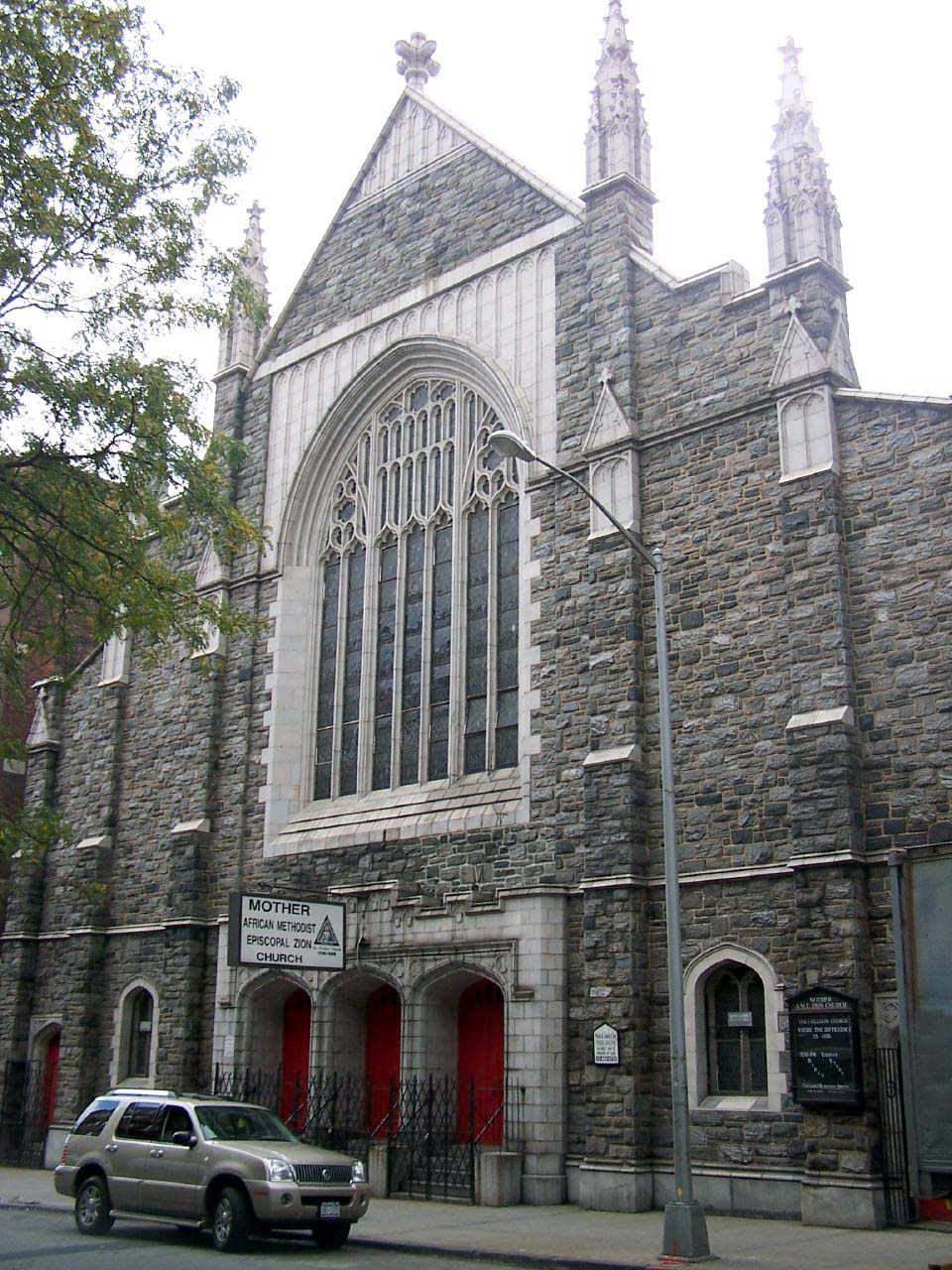Mother African Methodist Episcopal Zion (AME) Church, founded in 1796, is currently located in Harlem, New York. It is the oldest African American church in the state of New York and was established when black parishioners left John Street Methodist Church in that city. The group, under the leadership of Minister James Varick, had grown disillusioned with increasing segregationist practices within the Methodist church organization. Ministers James Varick, Christopher Rush, William Miller, and George Galbreath would become bishops and eventually be recognized as the founding members of the African Methodist Episcopal Zion denomination.
Originally given the name “African Chapel,” the church later settled on the name “Zion” because of its biblical resonance. The first services of Zion Church were held in a rental property in what is now downtown Manhattan. Within four years the congregation raised enough money to build their first building. Zion Church attracted many black parishioners, and served as the only African American church in New York City until Abyssinian Baptist Church was founded in 1808.
In 1820, Zion withdrew from the predominantly white Methodist Episcopal Church and formed the African Methodist Episcopal Zion Conference denomination. Introducing black religious expression while catering to a growing population of black abolitionists, affiliate Zion churches sprang up, prompting the original church to distinguish itself as being the “Mother” church. In 1848, Zion Church officially changed its name to Mother African Methodist Episcopal Zion Church.
Affectionately known as Mother Zion, the church was once considered the “Freedom Church,” having served as a station for the Underground Railroad. (Former slave Fredrick Douglass was assisted by Mother Zion in his escape to freedom; Sojourner Truth was a member of the church.) Social activism and collective responsibility espoused by Mother Zion’s pastoral leadership led to the church being a target of violence by anti-abolitionist groups in 1807 and 1827. Notwithstanding, after slavery was legally abolished in the state of New York in 1827, Mother Zion continued to be a strong vocal advocate for the abolition of slavery throughout the country.
During the latter 1930s Mother Zion was a haven for famous Harlemites drawn especially to the sermons of Reverend Dr. Benjamin C. Robeson who preached the gospel of civil rights activism. Notable celebrities who frequently worshipped at Mother Zion included Langston Hughes, W.E.B. DuBois, Marian Anderson, Roland Hayes, Joe Louis, Madam C.J. Walker, and Rev. Robeson’s younger brother, Paul Robeson.
Black migratory patterns within New York City prompted Mother Zion to relocate several times until the church moved to its present location at 140-6 West 137th St. in the Harlem community of Manhattan, NY. Church officials commissioned New Jersey architect George W. Foster, Jr., one of the first registered black architects in the country, to design the church. The neo-Gothic building, completed in 1925, is made from granite and features a large, multi-panel stained glass window, pinnacles, and seats 1,000 persons. Founding Bishop James Varick’s tomb is located under the sanctuary. In 1993, Mother Zion was designated a historical landmark in the city of New York.
The church operates the James Varick Community Center (est. 1972) to serve the educational, social, and health care needs of the surrounding community. Currently, Reverend Gregory Robeson Smith, grandson of Rev. Benjamin Robeson, is the 40th pastor of Mother Zion. He has led Mother Zion since 1995.



Stephen A. Smith (1967- )